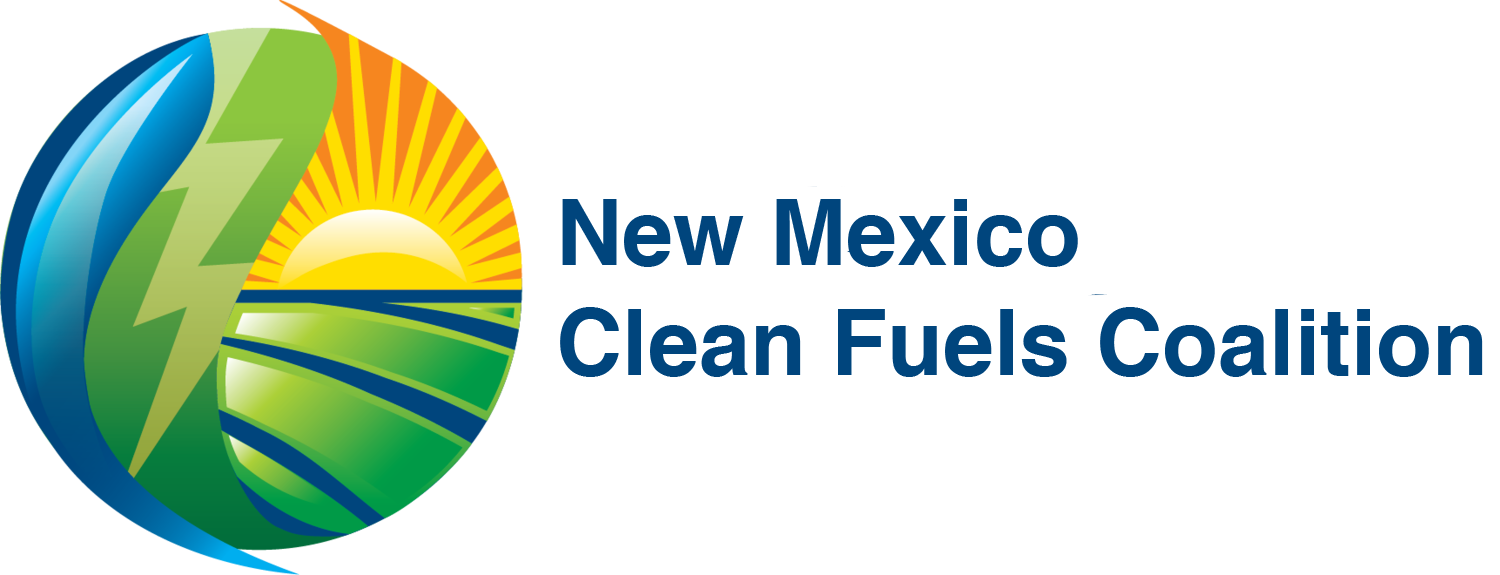
Economic Benefits
A Clean Transportation Fuels Standard will attract new, investments to New Mexico, making us a leader in cleaner fuels today and the new clean fuels of tomorrow.
A Clean Transportation Fuels Standard will generate the following:
Over $46 million every year in investment for cleaner fuels
600+ permanent jobs
$470 million in wages
$240 million in low carbon fuels production & delivery infrastructure
New Mexico can become a leader in the production of cleaner transportation fuels. The CTFS provides encouragement and strong economic incentives for a variety of fuel producers, not only from oil and gas, to set up shop in this state.
What’s Possible in New Mexico?
Growing the Clean Fuel Industry in New Mexico
-
Biodiesel is similar to conventional or ‘fossil’ diesel. Biodiesel can be produced directly from wastes fats, oils and greases, including vegetable oil, animal oil/fats, tallow or waste cooking oil.
Currently, New Mexico imports all its biodiesel, rather than producing it locally. With a clean fuel standard, New Mexico could take advantage of today’s carbon credit market value for biodiesel, which is approximately $1.57/gal
-
New Mexico is a net exporter of both conventional and renewable electricity, which as a transportation fuel is used primarily to charge electric vehicles (EVs). Of the approximately 650,000 passenger vehicles registered in New Mexico, 1,260 are EVs.
Growth in this sector is currently constrained by the lack of incentives and statewide availability of public charging stations. Consequently, EVs are most frequently charged at home, and are typically used for intracity travel. Expanding EV infrastructure across the state will make EVs more accessible to rural dwellers.
As an added benefit, electric utilities could use revenues from clean fuel standard credits to invest in rural EV infrastructure and incentives to increase EV adoption among consumers.
-
Ethanol is a renewable fuel made from various plan materials.
New Mexico is brimming with unrealized potential in the alternative fuels arena. It imported 100 percent of the 2,400,000 barrels of ethanol it consumed. With the market-based incentives provided by a clean fuel standard, New Mexico could be positioned to attract a second-generation, cellulosic ethanol producer to the state.
Almost any plant-based material can be an ethanol feedstock, including corn stover which can be found in several parts of New Mexico.
-
Green hydrogen is a clean fuel that, when consumed in a fuel cell, produces only water. Green hydrogen can be produced from a variety of renewable and low carbon domestic resources, such as biomass.
Fugitive methane emissions from the Permian and the San Juan Basins that would otherwise be released into the air could be captured and used as a feedstock to produce green hydrogen.
-
Made with plant and animal fats, renewable diesel offers greatly reduced emissions and improved performance compared to petroleum diesel. Renewable diesel fuel is a direct substitute for diesel fuel that is refined from lower carbon and renewable source materials.
In New Mexico, used cooking oils from the restaurant industry could be diverted from landfills and used to create renewable diesel.
-
Renewable Dimethyl Ether (rDME) is a low-carbon, zero-soot alternative to petroleum diesel.
rDME can be made from several feedstocks including animal waste, woody biomass from forest residue, agriculture and crops, and sewage.
-
Renewable natural gas is natural gas produced by the decomposition of organic matter. The major sources of renewable natural gas are landfills, animal manure, and solid waste extracted during wastewater treatment.
Renewable natural gas (RNG) is currently collected and beneficially reused onsite (e.g., for heating or electrical power generation) at nine municipal wastewater treatment plants and two municipal landfills. The largest, and as yet untapped, source of RNG in New Mexico is its dairies. New Mexico has approximately 130 dairies, with the largest average herd size (2,357) in the nation.
-
Renewable propane is a non-fossil fuel that is produced from 100% renewable raw materials used to power propane vehicles.
Renewable propane can be produced from feedstock like animal fat, algae and cooking oil.
Existing New Mexico Industries That Can Benefit
Oil and Gas
Fugitive methane emissions shift from waste to feedstock for hydrogen to fuel company vehicles. CO2 by-product used for enhanced oil recovery (EOR) is geologically sequestered. Replacing the natural gas used in oil extraction or refining with solar energy or biomethane.
Forest Management
No more burning of slash piles. Low/no-value woody biomass becomes feedstock for cellulosic ethanol, lignin fraction becomes feedstock for carbon fiber production.
Dairies
Manure shifts from waste to feedstock, and management shifts from an operational expense to revenue stream.
Utilities
Utilities use revenue from earned credits to build out EV infrastructure.
Farming
Farmers benefit by supplying large quantities of biomass (think tallow and cow manure from dairy farms in Clovis, pecan shells from orchards in Doña Ana County and other organic waste from operations) they produce.






